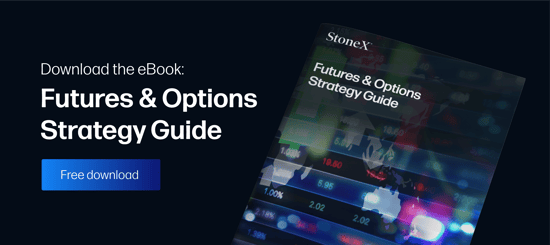Types of Stop Loss Orders
A stop loss is an order designed to force the closure of an open position at market. If it’s a long position, a sell order is used; if it’s a short position, a buy order is warranted.
The functionality of a strong stop-loss order should promote efficient trade by minimizing slippage and facilitating a timely market exit. However, optimizing these two key elements of trade depends largely upon which type of stop traders incorporate into their trading strategy.
Not all stop losses are created equal. Each offers the user a unique collection of attributes. Here are four of the most common and trade-related areas in which they excel:
#1 Market Orders
A tried-and-true way of entering or exiting a position immediately, the market order is the most traditional of all stop losses. Placing a market order is easy; simply hit the “Join Bid/Offer” or “Flatten” buttons on you trading DOM, and the order is instantly sent to market for execution. Accordingly, any open long or short positions are closed out at the best available price.
Market orders are great for closing positions when time is of the essence. However, be forewarned ― slippage can be significant in exceptionally volatile or thin markets.
#2 Stop Limits
When precision is the primary objective, stop limits are the order of choice. A stop limit order rests at market at a specific price until filled. Unless the order is able to be executed at exactly the defined price, or within a predefined offset, it will sit at market until filled or cancelled.
To illustrate, assume that Archer the crude oil trader is long one lot of July WTI crude oil from $58.06. To protect the open position, Archer places a stop limit order at $57.84 with a defined offset of 1. This means that if the price falls to $57.85 or $57.84, the long will be closed out at one of the two prices.
Stop-limit orders are most useful within a highly regimented trading strategy. Scalping and other high-volume approaches often rely on the specificity of the stop limit. Nonetheless, it’s important to realize that the stop limit order may go unfilled during times of extreme volatility.
Any trades are educational examples only. They do not include commissions and fees.
#3 Stop Markets
For a majority of retail traders, the stop market is the go-to stop loss order. It combines the functionality of both the market and stop-limit order types, ensuring a speedy exit upon a specific price point being hit.
Like the stop limit, the stop market rests at market until price hits the predetermined level. Upon election, it’s filled at the best available price, as per the market order. This is a useful feature because it guarantees the closure of an open position.
Stop market orders can be extremely useful in volatile markets. In practice, they give the trader an ability to pre-plan a hasty exit from a position under duress. Potentially significant slippage is once again a concern, as it is with traditional market orders.
#4 Trailing Stops
Among all of the stop loss types, trailing stops are among the most advanced. A trailing stop moves in concert with price action, from a defined distance.
Once again, let’s say that Archer is long one lot of July WTI crude oil from $58.06. In lieu of other orders, Archer implements a trailing stop order at $57.91 with a predetermined lag of 15 ticks. As price moves forward, the trailing stop does also, on a tick-by-tick basis.
Any trades are educational examples only. They do not include commissions and fees.
Trailing stops are valuable to traders who want to let positive positions run, lock in profits, or protect against a market reversal. They are especially receptive to trend and range trading methodologies.
Know Your Stops
Managing active trades in the live futures markets can be a challenge. Sudden spikes in volatility and order flow are common, stressing the need for efficient profit-taking or market exit. One way to gain competency in this department is to implement the correct stop-loss order for your strategy.



